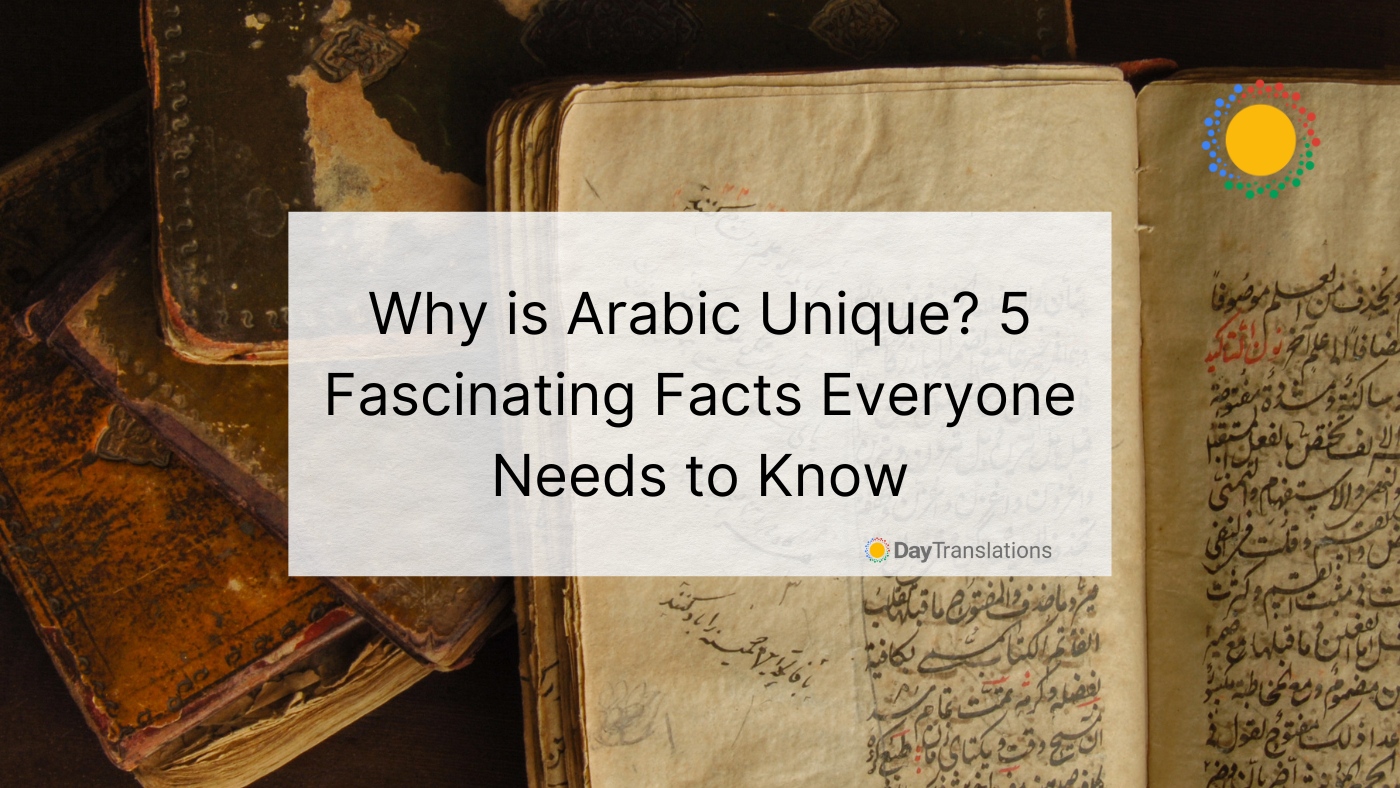Perhaps one of the most fascinating languages in the world today is the Arabic language. It is one of the most spoken languages in the world, ranking third just behind the English and French languages. But why is Arabic unique?
Understanding the History of the Arabic Language
The Classical Arabic languages can be traced as far back as AD 512 to 562. The Arab traders from the Mediterranean naturally brought their language with them when interacting with other cultures, so the spread of the Arabic language came to be. Later on, during the Middle Ages, Literary Arabic was used for science, math, and philosophy.
As one of the oldest and most widely spoken languages in the world, it’s not surprising that the Arabic language has influenced many other languages in the world and is the official language of a variety of countries that use Semitic languages.
In Europe, both Latin and Greek have been influenced by the Arabic Language. Hence, much of the Romance languages such as Portuguese, Spanish, Catalan and Sicilian borrow many vocabulary words from Arabic.
Its influence can be seen in Turkish, Kurdish, Persian and Urdi. The African languages of Somali and Swahili have also been touched by the Arabic Languages. The influence of the language has also reached the languages spoken in Asia, such as Hindi, Malay, Indonesian, Pashto, Punjabi, Sindhi, Hausa and Tagalog. At the same time, many English words actually borrow heavily from the Arabic language.
Given the extent of the influence of the language, it is still difficult for non-speakers to learn Arabic. Perhaps this is because there are many nuances to the language that can be deemed unusual or maybe downright weird for those who don’t speak Arabic. Here are five of the weirdest things about the Arabic language…
Fascinating Facts that Make Arabic Unique
1. Words in the Arabic Language Always Start with a Consonant
Probably one of the weirdest things about the Arabic language is that the words always begin with a consonant. They are then always followed by a vowel. The way in which a speaker of Arabic constructs words is unlike many words in the English language (and even other Semitic languages) that have two consonants in succession, sometimes even having silent letters.
2. The Arabic alphabet Only has 3 Vowels
The Arabic alphabet is comprised of 28 letters. However, only three of these are vowels. These three vowels have five different variations, which is what makes up the variety in Arabic dialect. This means the majority of the Arabic words have consonants. How could a language with just three vowels accommodate so many words? Pothooks and titles differentiate the vowels in the written form, but this is seen in scriptures and colloquial Arabic.
Just like the vowels, the consonants also have variations with a third of the consonants having up to four variations.
3. Arabic Words are Written in Script, Left to Right
Unlike most other languages, Arabic writing is script-based. This accounts for the Arabic Alphabet being one of the most visually interesting written languages in the world due to its distinct cursive format of every Arabic word.
At the same time, it is written from right to left, unlike Latin based languages, which are written from left to right.
Modern standard Arabic, which traces its roots from the language of the Quran is taught in schools and is used in places of business, media and government offices.
4. There are No Letters for T, D, H, G and Z in Arabic Script
The Nabataean alphabet system on which the written Arabic language is based on did not have letter symbols for many of the most commonly used letters in the English language. These are d, h, g, t and z.
Only 15 letter shapes were used for 28 different consonants. This means that some consonants would share the same shape. As a way of differentiating the consonants that shared the same shape, a system of dots, which were placed over the letters, was developed.
However, just as all languages evolve over time to adapt to other cultures, additional letters were used to refer to foreign words and nouns with sounds that are not used in the standard language., such as when doing an English-to-Arabic translation.
5. Arabic is a Contextual Language
In the Arabic language, there are no punctuation marks used in the written format. There are also no commas, periods, exclamation points, or question marks. This means there is no way to visually determine where a sentence begins or stops, unlike in an Arabic-to-English translation where a reader is guided with punctuation marks.
How, then do readers understand a paragraph? The entire text is considered carefully to be able to grasp something in the same way that Arabic translation services do.
Why is Arabic Unique? Because It’s One of a Kind!
These are just some of the things that add texture and interest to the Arabic language, providing one of the most commonly spoken languages in the world with its own distinct personality. It is interesting that the written language differs from the spoken version, which probably provides another challenge for those trying to learn to speak it. However, it’s good to remember that what is weird for others is simply the norm for those who know it.
So, why is Arabic unique? Because it’s one of the forefathers of modern Semitic languages that has been preserved and protected throughout the decades. Though it might seem odd to some, it’s one of the most audibly and visually appealing languages out there!














Sorry, the comment form is closed at this time.